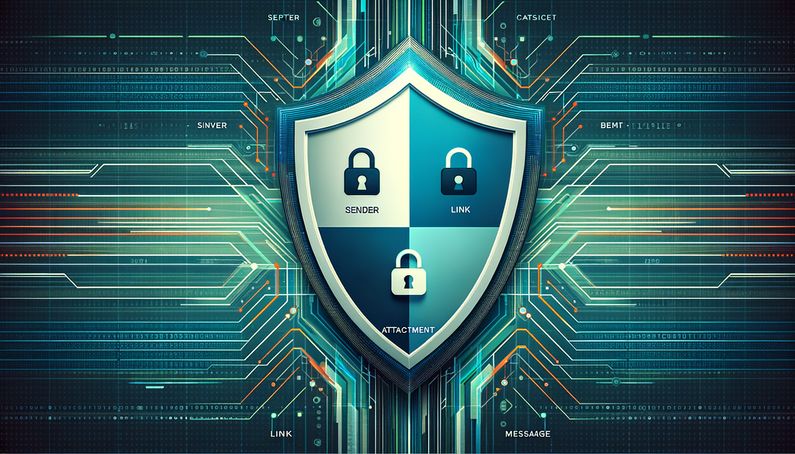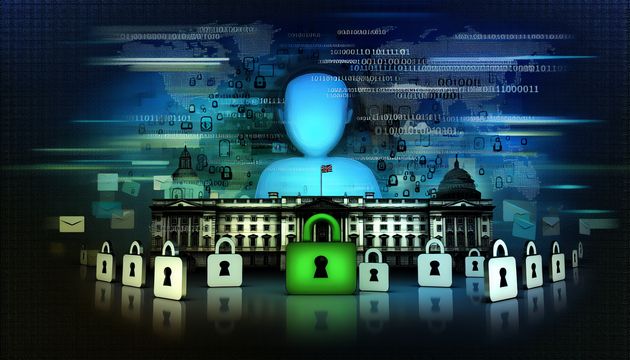
Solving Phishing Attacks with the SLAM Method: A Comprehensive Guide
Phishing attacks have become a pervasive threat in our digital lives, akin to the common cold in the world of cybersecurity. These attacks, often disguised as legitimate communications, aim to deceive individuals into divulging sensitive information or downloading malicious software. To combat this, the SLAM method has emerged as a practical and effective strategy. This method, which stands for Sender, Links, Attachments, and Message content, provides a structured approach to identifying and mitigating phishing threats. By focusing on these four critical elements, individuals and organizations can better protect themselves from falling victim to these cyber threats. The SLAM method is not just a set of guidelines but a comprehensive framework that empowers users to scrutinize emails with a critical eye, ensuring that they can distinguish between genuine and malicious communications. As phishing tactics continue to evolve, understanding and implementing the SLAM method is more crucial than ever. This guide will delve into each component of the SLAM method, offering insights and practical tips to enhance your cybersecurity posture. (NordVPN, Safe Search, UPRAISE PR, PSM Partners, Better World Technology)
Decoding the SLAM Method: Sender, Links, Attachment, and Message
In today’s digital world, where emails are as common as morning coffee, phishing attacks have become a persistent threat. The SLAM method—focusing on Sender, Links, Attachments, and Message content—offers a practical approach to identifying these malicious emails. Let’s dive into how you can use this method to protect yourself and your organization from phishing attempts.
Sender Verification
The first step in the SLAM method is to scrutinize the sender’s details. Cybercriminals often use spoofed email addresses to deceive recipients into believing that the email is from a trusted source. This tactic is prevalent because it exploits the trust that individuals place in familiar contacts. To counter this, it is crucial to verify the sender’s full email address. Recent insights from NordVPN (2024) suggest being wary of discrepancies, such as a known contact suddenly using a different email domain. For instance, if a colleague who typically uses an “@company.com” email suddenly sends a message from “@hotmail.com,” this should raise suspicion. Additionally, checking for slight alterations in the email address, like replacing “i” with “1,” can help identify phishing attempts.
Link Inspection
Links embedded in emails are a common vector for phishing attacks. Scammers often disguise malicious URLs to appear legitimate, leading users to fraudulent websites designed to steal personal information. To mitigate this risk, it is essential to inspect any links before clicking. Safe Search (2024) recommends hovering over links to reveal the actual URL destination. On mobile devices, pressing and holding the link can display the destination in a popup. This practice helps ensure that the link directs to a legitimate site rather than a phishing page. Additionally, if an email or text with a link is unexpected, it is advisable to contact the sender directly to verify its authenticity.
Attachment Examination
Attachments in emails can be another source of phishing attacks. Cybercriminals may use attachments to deliver malware or ransomware to the recipient’s device. Therefore, it is vital to scrutinize any attachments before opening them. UPRAISE PR (2024) emphasizes the importance of verifying the legitimacy of the attachment by considering the context of the email and the sender’s usual behavior. If an attachment seems out of place or unexpected, it is wise to confirm its validity with the sender through a separate communication channel. Additionally, employing antivirus software to scan attachments before opening them can provide an extra layer of security.
Message Content Analysis
The final component of the SLAM method involves analyzing the content of the email message. Phishing emails often contain telltale signs, such as poor grammar, spelling mistakes, and urgent requests for personal information. PSM Partners (2024) advises being vigilant for inconsistencies or unusual requests within the email. For example, if an email purports to be from a bank but contains grammatical errors or asks for sensitive information like passwords or Social Security numbers, it is likely a phishing attempt. Additionally, legitimate organizations typically do not request personal information via email, so any such requests should be treated with skepticism.
Enhancing Employee Awareness
While the SLAM method provides a structured approach to identifying phishing emails, its effectiveness hinges on employee awareness and training. Phishing remains a significant threat in the workplace, as employees often forget cybersecurity training over time. Better World Technology (2024) highlights the importance of regular training sessions to reinforce the principles of the SLAM method. By consistently educating employees on how to recognize phishing attempts, organizations can reduce the likelihood of successful attacks. Furthermore, incorporating real-world phishing simulations into training programs can help employees practice identifying and responding to phishing emails in a controlled environment.
In summary, the SLAM method—focusing on Sender, Links, Attachments, and Message content—offers a comprehensive framework for detecting phishing emails. By implementing this method and fostering a culture of cybersecurity awareness, individuals and organizations can better protect themselves against phishing attacks.
Final Thoughts
In conclusion, the SLAM method offers a robust framework for identifying and mitigating phishing attacks, a threat that continues to challenge individuals and organizations alike. By focusing on the sender’s details, scrutinizing links, examining attachments, and analyzing message content, users can significantly reduce their risk of falling prey to phishing scams. However, the effectiveness of the SLAM method is contingent upon continuous education and awareness. Regular training sessions and real-world simulations can reinforce these principles, ensuring that employees remain vigilant and informed. As cybercriminals become more sophisticated, it is imperative that our defenses evolve in tandem. By fostering a culture of cybersecurity awareness and implementing the SLAM method, we can create a safer digital environment for everyone. Remember, in the battle against phishing, knowledge is your most powerful weapon. (NordVPN, Safe Search, UPRAISE PR, PSM Partners, Better World Technology)
References
- NordVPN, 2024, https://nordvpn.com/blog/slam-method/
- Safe Search, 2024, https://www.safesearchkids.com/how-to-protect-yourself-against-email-phishing/
- UPRAISE PR, 2024, https://upraisepr.com/blog/the-slam-method-for-phishing-detection/
- PSM Partners, 2024, https://www.psmpartners.com/blog/slam-method/
- Better World Technology, 2024, https://www.betterworldtechnology.com/post/ways-the-slam-method-can-improve-phishing-detection



